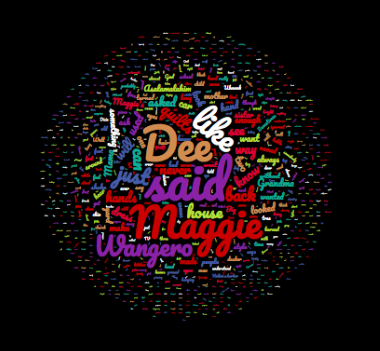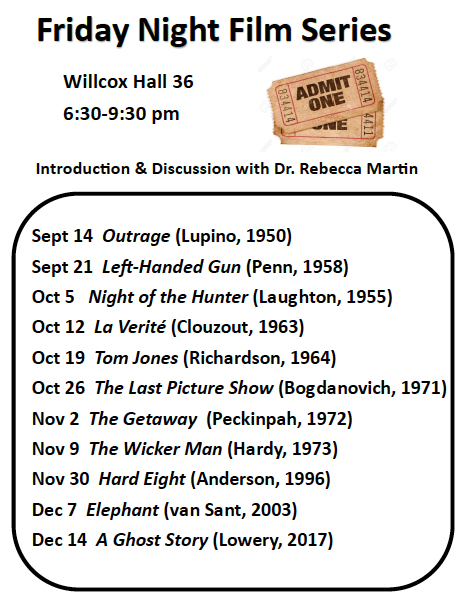Yesterday, my LIT 132 Intro to Literary Studies class used a Word Cloud tool to jump start close reading of short stories.

We had already read two short stories included in the text Digging into Literature by Joanna Wolfe and Laura Wilder: “Antlers” by Rick Bass and “Everyday Use” by Alice Walker. Students are going to be reading about two “topoi” for homework before our next class, so we are beginning to use topoi before they read explicitly about them.
“What are topoi?” you ask. “Topoi” are questions we can repeatedly ask or strategies we can regularly use so we aren’t always starting from scratch when building an argument. In this course that focuses on interpreting literature, the topoi Wolfe and Wilder introduce provide ways of approaching literary texts that will help students make arguments about the texts’ meanings—arguments that “are debatable, supported by textual evidence, and complex” (Wolfe and Wilder 39). In other words, the topoi will help students approach texts like literary critics.
Here is what we did to engage in two topoi: the “Patterns” strategy and the “Surface/Depth” strategy.
***
- We found online versions of the story we were interested in interpreting. My examples below focus on “Everyday Use” by Alice Walker.
- We selected all the text (CTRL+A) and copied it (CTRL+C). You can also use Word documents or PDFs to produce a Word Cloud.
- We went to Word Cloud and pasted all the text into a cloud.
- We selected the shape and font we liked, and we moved the slider to test how the word cloud would change as we made it larger and smaller.
- We made note of the biggest words. These were the words that occurred with the highest frequency in each text.We chose one word at a time to focus on. If I were going to do it again, I’m really interested in the way the word “look” is used in the text. But our class chose “house,” partly because we thought there might be some symbolism going on with this word, but it seemed less obvious than the symbolism we would likely find with the word “quilt.”
- We went back to the online version of the text and used CTRL+F to pull up a search box. We typed our chosen word in that search box.

- We began reading every occurrence of that word and talking about how the word was enriching the text. We made sure we paid attention to context; considering a single phrase or sentence without attention to the way it fit into the story as a whole wouldn’t be as helpful.

- When we found an odd or puzzling use of the word, we did not gloss over it or otherwise ignore it. Instead, we spent extra time on the odd usage. We decided we could make some sense of the odd usage with a combination of strategies. We both
a) thought about the story’s themes and applied them to the odd usage (see the first bullet below) and
b) spent time making associations with the surprising word to see if any of these associations helped us think more about the way the house was being represented
If I were to do it again, I would also tell my class that there may be a pattern of nautical terms in the story, even though it takes place on land. A third strategy, then, would be to notice if the reference to a ship was part of another pattern in the story that overlapped with the attention to “house.” - We spent a few minutes brainstorming our associations with the term we had chosen from the word cloud. We then compared these associations to what was going on in the text. Was the text drawing on these associations and extending them, or was the text upsetting and challenging the typical associations?

***
Even though we used technological tools to help us do our work, we also mentioned that we can do such work simply by noticing the recurrence of words, images, ideas, and so forth as we read.
We also noted that we might miss some important moments if we consider a single word but ignore permutations of that word. For example, when considering “house,” we should also notice if “home” or “mansion” or “abode” and other similar words were used. That would mean rereading the text rather than just doing searches for words.
It was kinda fun. We used both the “patterns” and the “surface/depth” topoi and thought about “Antlers” and “Everyday Use” in a complex way that built on our first impressions of the stories.
Part of the reason for success was that the students were on board. One student told me how much she enjoyed our class and she credited me, but I told her I was not the only one bringing energy to our discussion. It’s awesome when a critical mass of people get into something. Sparks fly.
If you try out this approach or if you have other ideas for thinking about literary texts in complex ways, please share in the comments. It’s good when we can inspire one another!






